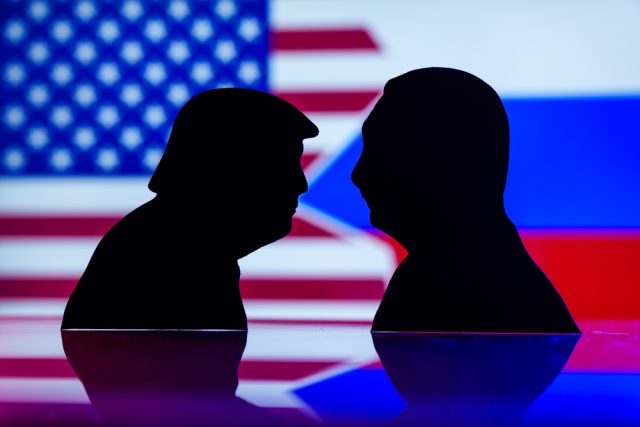
On 20 January, Donald Trump will be sworn in by the US Constitution and become the 47th President of the United States. It is only natural that the eyes of the whole world will be on the White House on that occasion, especially because of the statements and promises made by the tycoon during the election campaign. If Trump were to put into practice in his second term even a part of what he said, it would at least be interesting to watch. First and foremost, however, in Europe, Kiev and Moscow the attention is focused on the role the tycoon might or might not play in the negotiations towards an end to the conflict between Russia and Ukraine. A strong point of Trumpian rhetoric, with the new President saying on several occasions that he is sure he can resolve in a few days this situation – which, in the form of open warfare, has been going on since 2022 – and probably with just a few bilateral meetings. The fact that Trump does not lack the strength to at least attempt this approach is certain. It will have to be observed, however, what results he can achieve and whether these will really serve the interests of the Ukrainian people, or whether they will only serve the purpose of easing the tension and relieving the USA of the economic and social burden of this conflict and the protection of Europe.
NEGOTIATIONS ACCORDING TO MOSCOW
While Minister Lavrov has stated that Russia has always been open to negotiation, it is more than clear that any step towards a cessation of hostilities can only be accepted by Moscow in a position of strength. Possibly, with many of what have been termed the ‘root causes’ of the conflict having been eliminated. What would be important for Moscow at the moment is not a cease-fire and the crystallisation of a conflict that could reopen in some time, but rather a genuine peace that is inviolable and that is sealed on the Kremlin’s terms. In this regard, any discussion that opens with Trump in January will see Putin’s emissaries in dialogue, but starting from positions of strength that will have to be acquired. Certainly, part of this strategy concerns gas and the problems that could arise in the coming months with the expiry of the agreement for the transit of Russian gas through Ukrainian territory. This is no small element of pressure, especially for some European chancelleries. This is also why Trump’s position, leaked in recent weeks (including through an interview with Time on 12 December), that would see an immediate freeze of hostilities on the line of engagement, and thus a stabilisation of the current front in the conflict, would not be well accepted by Moscow. This is because it would leave too much uncertainty about the future of the region, and would then hand over to Europe the burden of supporting an eventual conflict. The opportunity that the Kremlin sees at the moment is, at the urging of the new US Administration, to arrive at a peace that would permanently assign the occupied Ukrainian territories to Russia. Other hypotheses under consideration, such as the establishment of a European interposition force or the twenty-year suspension of Ukraine’s membership in NATO, would not be sufficient to get Putin to the negotiating table.
NATO’s role
Given also the resumption of the gas disputes, with the halt to the transit of Russian gas in Ukraine with the end of the 2019 agreement, the negotiations that Donald Trump is preparing to open seem to be starting off on a far from solid basis. It is a rather difficult mission, especially since the ground where the parties can be brought together is very unstable and strongly linked to the international situation, as well as the context on the ground. Naturally, the issue of deterrence will have to be placed on the table, especially for the European Union. In fact, Russian Minister Lavrov in recent weeks has returned to the issue of deploying more missiles looking westwards, in addition to the use of the latest generation of ballistic missiles called Oreshnik. This renewed interest in the positioning of missile units should, in fact, be seen in the context of another issue that could weigh on the negotiations envisioned by Donald Trump: the expiry, scheduled for 2026, of the New Star Treaty for the reduction of nuclear weapons. It is precisely on this, in fact, that NATO’s attention is focused, looking at the forthcoming renewal negotiations with expectations that are anything but certain. So much so that NATO troops stationed in Europe have been moved towards the eastern border: an element of further pressure on the negotiations and the course of the conflict between Russia and Ukraine. Perhaps, however, it is also a move designed in relation to the demands made so far by the tycoon, who has threatened to ask the members of the Atlantic Alliance for a conspicuous increase in their military spending. An increase that could be approximately of 5% of GDP. Referring back to NATO, Secretary General Mark Rutte’s counterproposal stood at a maximum value of 3% of GDP, in any case a real drain on the economies of many European countries. However, Rutte’s suggestion leaves room for reflection. It is, in fact, not a closure to increased military expenditure, but only a downsizing of US expectations. Is this a sign that there are few in Europe who believe in the success of a Trump-mediated negotiation in the short term?



 Subscribe
Subscribe